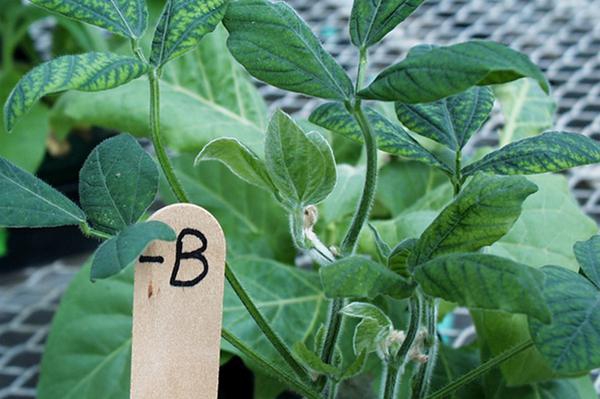Field Crops
en Español / em Português
El inglés es el idioma de control de esta página. En la medida en que haya algún conflicto entre la traducción al inglés y la traducción, el inglés prevalece.
Al hacer clic en el enlace de traducción se activa un servicio de traducción gratuito para convertir la página al español. Al igual que con cualquier traducción por Internet, la conversión no es sensible al contexto y puede que no traduzca el texto en su significado original. NC State Extension no garantiza la exactitud del texto traducido. Por favor, tenga en cuenta que algunas aplicaciones y/o servicios pueden no funcionar como se espera cuando se traducen.
Português
Inglês é o idioma de controle desta página. Na medida que haja algum conflito entre o texto original em Inglês e a tradução, o Inglês prevalece.
Ao clicar no link de tradução, um serviço gratuito de tradução será ativado para converter a página para o Português. Como em qualquer tradução pela internet, a conversão não é sensivel ao contexto e pode não ocorrer a tradução para o significado orginal. O serviço de Extensão da Carolina do Norte (NC State Extension) não garante a exatidão do texto traduzido. Por favor, observe que algumas funções ou serviços podem não funcionar como esperado após a tradução.
English
English is the controlling language of this page. To the extent there is any conflict between the English text and the translation, English controls.
Clicking on the translation link activates a free translation service to convert the page to Spanish. As with any Internet translation, the conversion is not context-sensitive and may not translate the text to its original meaning. NC State Extension does not guarantee the accuracy of the translated text. Please note that some applications and/or services may not function as expected when translated.
Collapse ▲Learn More Using the Resources Below
Custom Tools for Growers
Extension Topics
- Corn
- Cotton
- Extension Entomology - Insect Biology and Management
- Extension Plant Pathology
- Hemp
- NC Integrated Pest Management (IPM)
- Official Variety Testing
- Organic Commodities
- Peanut Growers Information
- Soybeans
- Tobacco Growers Information
More Extension Programs at NC State University
- Agriculture and Resource Economics Extension
- Crop and Soil Sciences
- NC State Plant Disease and Insect Clinic
Partnerships and Organizations
Publications, Information, and News
Recent Publications related to Field Crops

Chapter 5. Vineyard Establishment
Vineyard establishment involves careful planning, thorough site preparation, vineyard design, planting, and trellis construction. Unlike …

Chapter 4. Vineyard Site Selection
Grapes grown in North Carolina are sometimes exposed to unfavorable climatic conditions and biological pests …

Commodity Fumigation: A Certification Manual for North Carolina Private Pesticide Applicators
This manual provides guidance tailored for North Carolina's non-commercial pesticide applicators using fumigants in commodity …

Chapter 9. Vine Nutrition
Grapevines require 16 essential nutrients for normal growth and development (Table 9.1). Carbon, hydrogen, and …

Seed and Seed Quality
This guide presents basic facts about seeds, including how they develop, how to store and …

Mid-Season Soybean Boron (B) Deficiency
This Soybean Nutrient Deficiency Information factsheet describes the symptoms and management of boron deficiency in …
Mid-Season Soybean Zinc (Zn) Deficiency
This Soybean Nutrient Deficiency Information factsheet describes the symptoms and management of zinc deficiency in …

Mid-Season Soybean Molybdenum (Mo) Deficiency
This Soybean Nutrient Deficiency Information factsheet describes the symptoms and management of molybdenum deficiency in …


